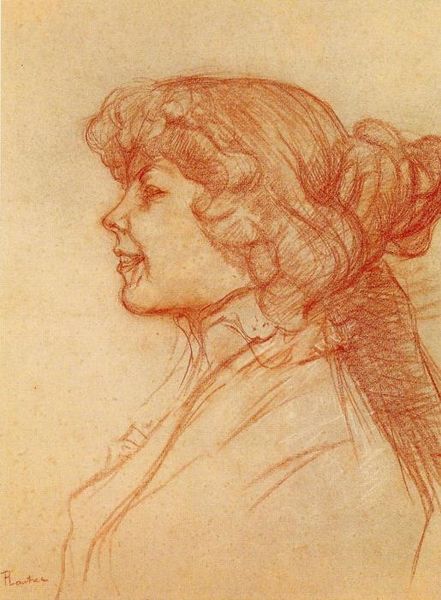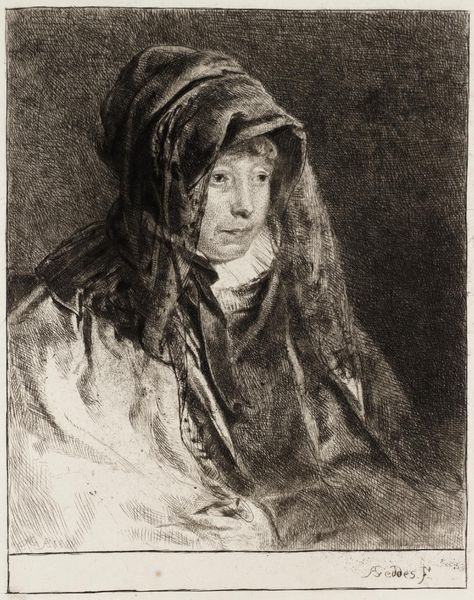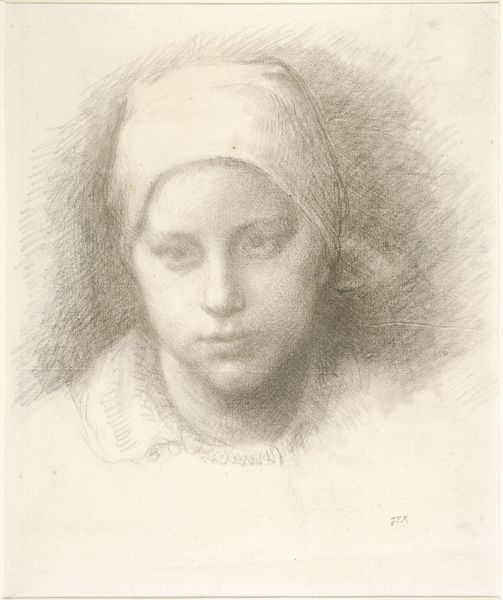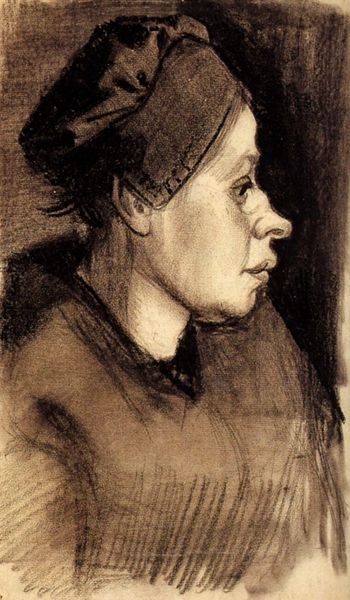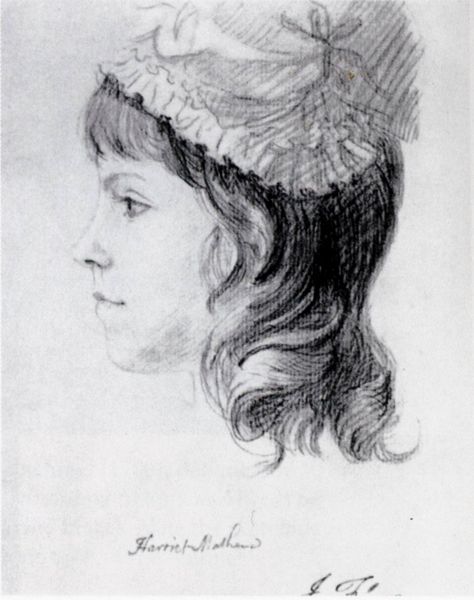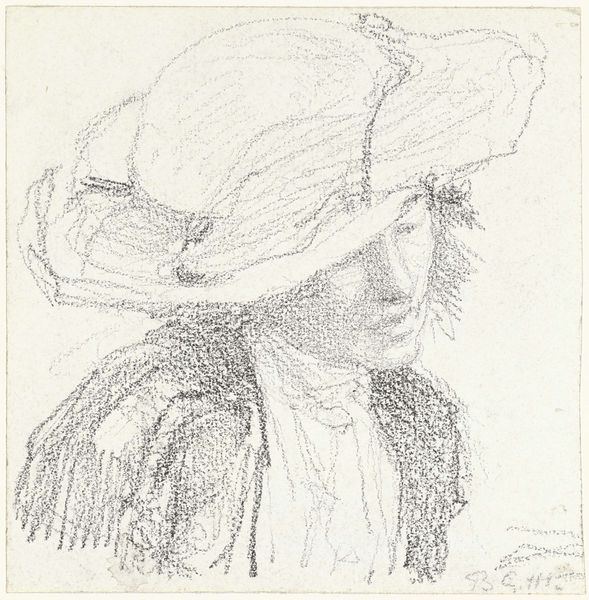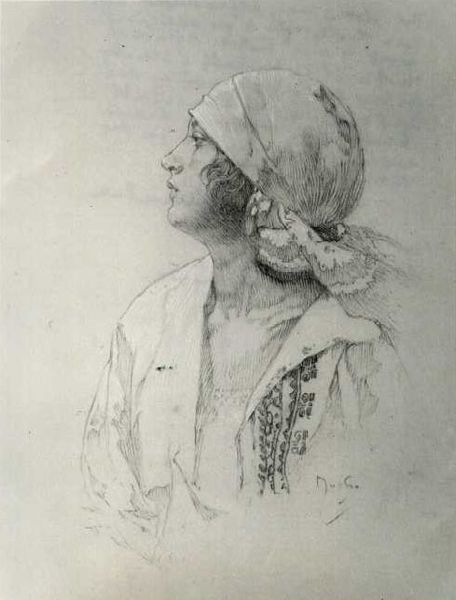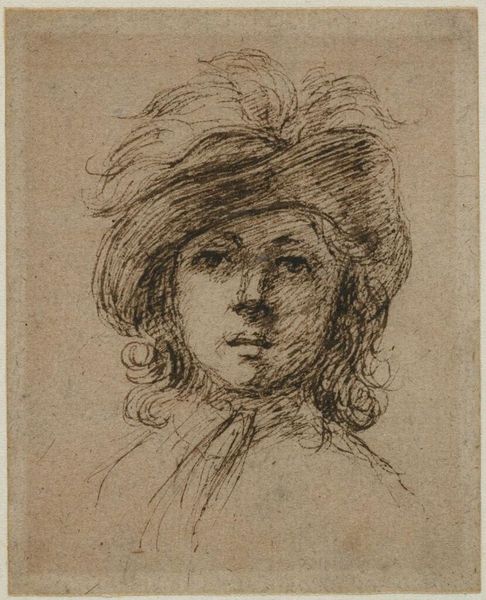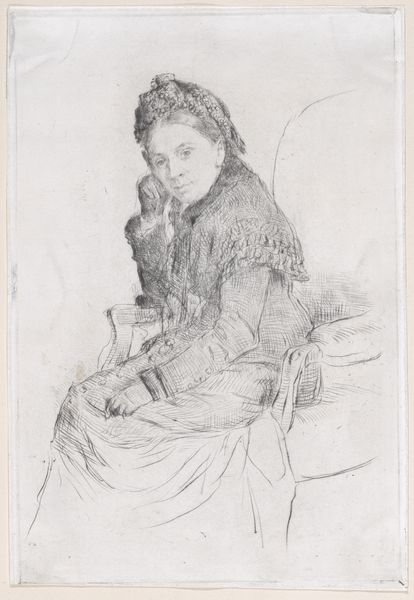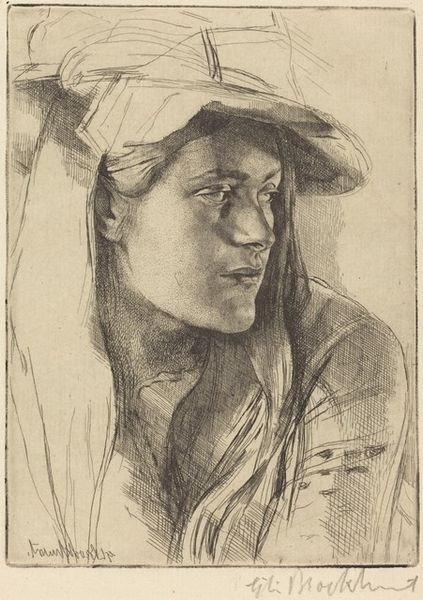
drawing, pencil
#
portrait
#
drawing
#
charcoal drawing
#
intimism
#
sketch
#
pencil
#
portrait drawing
#
realism
Copyright: Public domain
Curator: Here we have Ilya Repin's "Portrait of Vera Repina," created in 1926 using pencil and charcoal on paper. The artwork presents a head-and-shoulders view of Vera, rendered in delicate lines and shading. What’s your initial reaction to it? Editor: It feels like a stolen moment, doesn't it? The sketch-like quality gives the impression of a fleeting observation. She seems contemplative, perhaps caught in a reverie. The soft lines almost caress her features. Curator: Yes, the intimacy is striking, particularly considering Repin's established reputation as a master of realist paintings featuring historical scenes. It’s worth considering how social factors impacted such a deviation in style for the work of an artist with an established and accepted social standing. Here, he focuses on portraiture within his intimate circle, perhaps an adaptation to the demands and material limitations during the Post-Revolution era. Editor: Exactly, and it's so vulnerable, almost unfinished. But there’s a potent emotionality within the incomplete that is not found in finished portrait work. Did material accessibility play into it at all? It’s charcoal and pencil, so that screams economy to me. Curator: That’s a significant aspect. Charcoal and pencil allowed for both a faster execution and, comparatively speaking, affordability during an era where material shortages were the norm. Repin's exploration of intimate themes aligns with his aesthetic inclinations but are certainly reflective of altered socio-economic circumstances. It seems a decision borne from both artistic sensitivity and necessary constraint. Editor: Absolutely. I wonder about the hat she is wearing too. Does that tell us anything about social roles? Curator: Well, accessories such as the hat acted as social signifiers for women. But here, its slightly dishevelled style is echoed in the work’s execution. Instead of being the focal point, it becomes yet another point for the gaze to rest before following on to the artist’s lines. The quick and somewhat imprecise nature, again speaks to a shift away from overtly luxurious presentations. Editor: It leaves a powerful, haunting echo. It reminds us of our collective history and hints at Repin's internal, and artistic evolutions. Curator: Precisely. It prompts us to consider the interaction between the artist’s inner circle and larger social upheaval on a single piece. It encourages thinking on process as much as reception, perhaps?
Comments
No comments
Be the first to comment and join the conversation on the ultimate creative platform.
